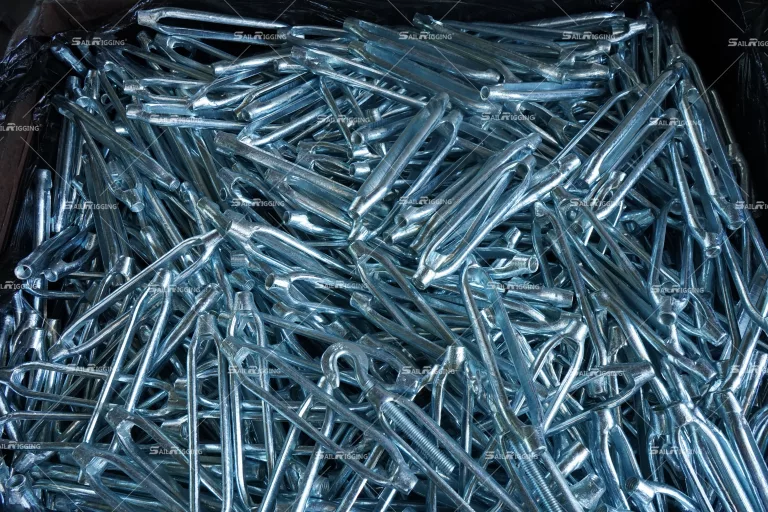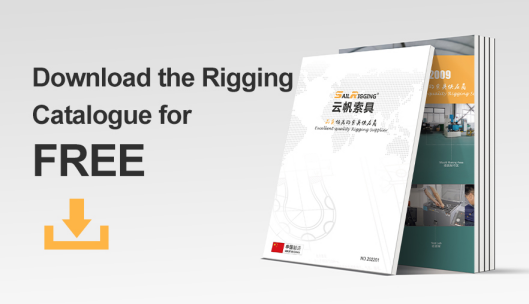Turnbuckles are indispensable tools in a wide range of industries and applications. Their primary function is to adjust the tension, length, or fit of cables, ropes, or wires, making them highly versatile for rigging, securing loads, and stabilizing structures. There’s so many type of turnbuckles, such as US type turnbuckles, DIN1480 turnbuckles, DIN1478 turnbuckles, commercial type turnbuckles, Australian type turnbuckles. Whether you’re in construction, shipping, or even outdoor activities, turnbuckles are used in numerous environments where reliable and adjustable tensioning is required. This article highlights some of the most common applications where turnbuckles are essential.
1. Construction and Building Projects
Turnbuckles are commonly used in construction and building projects for adjusting the tension of cables or wires used to support scaffolding, steel beams, or temporary structures. They are also used in the rigging of formwork, where precise tension control is required to hold large forms in place.
-
- Scaffolding:Turnbuckles help to stabilize scaffolding and prevent it from swaying, providing a secure base for workers.
- Formwork Support:For reinforced concrete forms, turnbuckles are used to adjust the pressure and ensure that forms are held securely during pouring.
- Structural Reinforcement:In buildings that require additional stabilization, turnbuckles are used to adjust the tension on steel cables to reinforce the structure.
2. Shipping and Freight
In the shipping and freight industry, turnbuckles are used to secure cargo, ensuring that items do not shift or become damaged during transit. They are commonly employed in securing loads in shipping containers, on flatbed trucks, and in marine transport.
-
- Container Securing:Turnbuckles are used to secure cargo inside shipping containers by adjusting the tension on the straps or cables that hold the load in place.
- Flatbed Transport:On flatbed trucks, turnbuckles are essential for securing large or heavy equipment, preventing movement during transport.
- Marine Cargo:In maritime shipping, turnbuckles are used to tighten and secure ropes or cables to hold cargo in place on ships and prevent shifting during transit across rough seas.
3. Bridges and Infrastructure
Turnbuckles are often used in bridge construction and other large infrastructure projects where high tension needs to be applied to cables and ropes. The ability to adjust the tension precisely is essential to maintaining the integrity and stability of these structures.
-
- Suspension Bridges:Turnbuckles are used in the rigging of cables that support suspension bridges, allowing engineers to adjust the tension for optimal load distribution.
- Tensioned Steel Cables:In cable-stayed bridges or other structures relying on tensioned steel cables, turnbuckles play a critical role in fine-tuning the tension of the cables.
- Support Systems:Turnbuckles are used in infrastructure like towers, masts, or other support systems to ensure the stability of the structure under varying environmental loads.
4. Marine and Boating Applications
In marine applications, turnbuckles are vital for securing rigging systems, adjusting the tension on boat rigging lines, and ensuring the proper alignment of sails. They help provide tension in stays, shrouds, and other critical parts of a boat’s rigging system.
-
- Boat Rigging:Turnbuckles are used to adjust the tension of the stays (cables that support the mast) and shrouds (side supports for the mast) on sailing vessels.
- Anchor Lines:In some marine applications, turnbuckles are used to adjust the tension of anchor lines or ropes, helping to keep vessels securely moored.
- Sail Tensioning:In sailboats, turnbuckles are used to adjust the tension of the sails and prevent them from becoming too loose or too tight, ensuring optimal performance.
5. Fencing and Outdoor Structures
Turnbuckles are commonly used to adjust the tension on fence wires, ensuring they remain taut and secure over time. Whether it’s for a barbed wire fence, chain-link fence, or livestock enclosures, turnbuckles provide the necessary tension to keep the structure in place.
-
- Wire Fencing:Turnbuckles are used to tighten and secure the wire tension for various types of fences, ensuring they remain upright and effective.
- Tensioning Rope for Outdoor Structures:In temporary outdoor structures like tents, canopies, and shade sails, turnbuckles are used to adjust and secure the ropes or cables that hold these structures in place.
6. Agriculture and Livestock
Farmers and ranchers frequently use turnbuckles in agriculture to help secure livestock fencing, gates, and other agricultural equipment. Turnbuckles are ideal for keeping fences taut and ensuring they can withstand the forces exerted by animals or environmental conditions.
-
- Livestock Fencing:Turnbuckles are used to adjust the tension on fencing wires or ropes, keeping enclosures secure and preventing animals from breaking through.
- Gate Securing:They are also used in securing gates, ensuring that they remain in place and can be easily adjusted as needed for access.
7. Event Rigging and Temporary Structures
For large outdoor events such as concerts, festivals, and exhibitions, turnbuckles are essential for rigging temporary structures like tents, stages, and banners. The ability to adjust tension is critical for maintaining safety and stability in temporary setups.
-
- Stage Rigging:Turnbuckles are used to tension rigging lines that support stages, sound systems, lighting, and other heavy equipment.
- Tent and Canopy Setup:When setting up large tents or temporary canopies, turnbuckles are used to tighten ropes and cables, ensuring that the structure remains secure and stable throughout the event.
- Banners and Signage:Turnbuckles help secure large banners or signage, keeping them taut and in place, even in windy conditions.
Turnbuckles are incredibly versatile and are used across a wide range of industries and applications where the adjustment of tension is necessary. Whether you’re in construction, shipping, agriculture, or even marine applications, turnbuckles provide the reliable tensioning and securing needed for safety and performance. Understanding where and how to use turnbuckles will help ensure that your rigging and tensioning systems are secure and effective, no matter the environment or load. If you have any question about turnbuckles in your line, just feel free to contact Sail Rigging. Our product manager will provide professional solution to your products.





